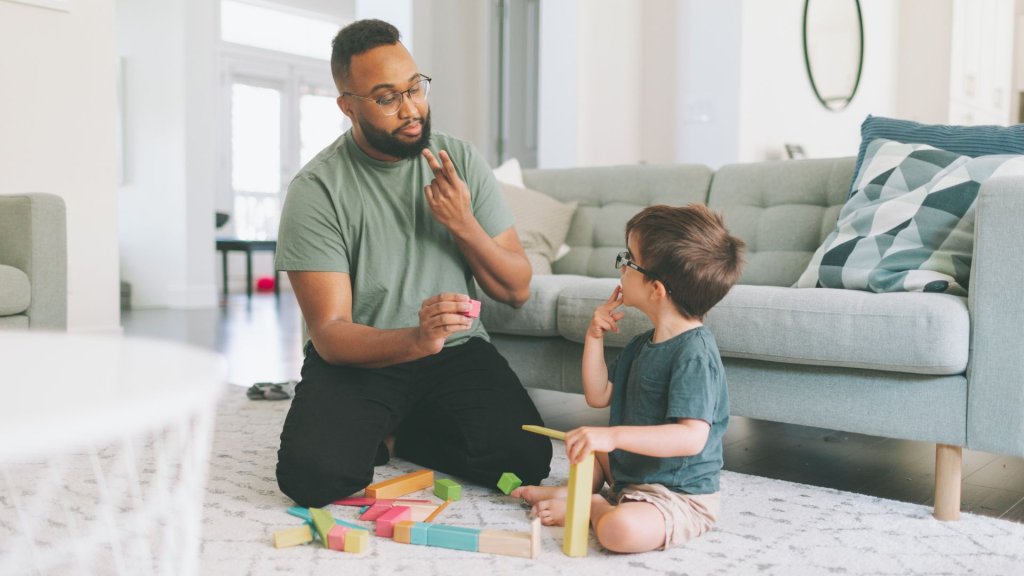Learning American Sign Language (ASL) offers more than just a way to talk to Deaf and hard-of-hearing people. It brings with it several unexpected benefits. For starters, it sharpens your ability to understand visual information and boosts your skills in non-verbal communication. It also helps you appreciate a unique cultural heritage more deeply.
Top 7 Benefits of Learning Sign Language

Improved communication with the Deaf community
Learning American Sign Language (ASL) helps you talk directly with Deaf people. It makes everyone feel included and helps us better understand each other’s cultures. Knowing ASL lets you connect with Deaf culture and build respect. You can make new friends and join in at Deaf gatherings, which is great for everyone getting along.
Plus, if you can sign, you’ll find it easier to work and learn together in places that value everyone’s input. Learning ASL isn’t just about picking up a new language; it’s a way to play a positive part in our diverse world.
Enhanced cognitive abilities
When you use ASL, you boost your visual-spatial skills. This means you better understand and organise what you see around you. It’s a bit like a brain workout that improves your memory and makes you more flexible in thinking. People who use ASL tend to pay more attention to small details. They’re also good at doing several things at once. This might be because they must closely watch hand movements and facial expressions when they sign. These skills in focusing and multitasking help with language and solving different problems.
Better parenting and education

Sign language is beneficial for both kids and adults. It improves parenting and teaching. When little kids, as young as eight months, learn to sign simple words, they don’t get as frustrated. They can tell you what they need before they can even talk. This helps them bond with their parents and grows their brains and feelings.
Sign language helps parents and teachers connect better with their children. It’s essential in special education. Kids who can’t talk can join in and learn like everyone else, which makes everyone feel more included and caring. In some cases, such as children born with congenital ear conditions, there may be a risk of hearing loss that impacts early language development. While not all individuals with these conditions experience hearing loss—and not everyone with hearing loss uses sign language—early identification and tailored interventions can significantly support a child’s communication needs and emotional growth. Depending on the severity, these interventions may include aesthetic correction and hearing restoration.
Improved spatial and visual perception
When you use ASL, you’re working in three dimensions. This practice makes you better at figuring out complex spaces. You become more aware of your surroundings, which is handy for finding your way around or understanding building designs.
Also, using your visual and spatial skills often through sign language can boost your performance in areas that need good vision. This includes fields like art, engineering, and design. Sign language sharpens your ability to perceive space and visuals and helps you in everyday life and at work.
Enhanced problem-solving skills

Learning American Sign Language (ASL) can sharpen your problem-solving skills. It pushes you to develop new communication methods, making you more creative. When you dive into ASL, you learn to think differently since it doesn’t follow the usual rules of spoken languages. This kind of thinking is helpful when you come up with quick, smart solutions in changing situations.
Also, ASL isn’t just about hand signs—it involves a lot of non-verbal cues like facial expressions and body language. Getting good at this means you better read situations and react correctly. This skill doesn’t just help at work; it’s helpful in everyday life, making it easier to handle various challenges.
Long-term cognitive benefits
Learning sign language early on can boost your brain power. It helps with thinking better and generally results in higher IQs. Research shows that kids who pick up American Sign Language (ASL) while learning other subjects tend to be better at reasoning and are even ahead in reading compared to kids who know just one language. There’s more good news. Being bilingual, including sign language, might help your brain stay sharp as you age. Studies have found that people who know more than one language tend to keep their mental faculties longer and are more resistant to diseases like Alzheimer’s. So, picking up signs isn’t just about communicating differently; it’s also a great investment in your brain’s health for your whole life.
Conclusion
In short, learning American Sign Language (ASL) does more than just help you talk to the Deaf community. It also helps your brain, makes education better, and strengthens relationships. Learning ASL isn’t just about picking up a new language. It allows kids to start communicating early and brings people closer together. So, learning ASL is more than helpful—it helps you connect with others and improves your life and the lives around you. It’s definitely worth it in a society that values everyone.

